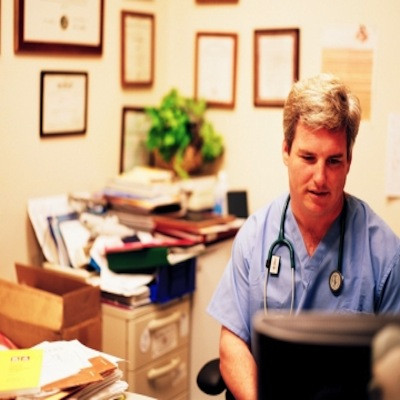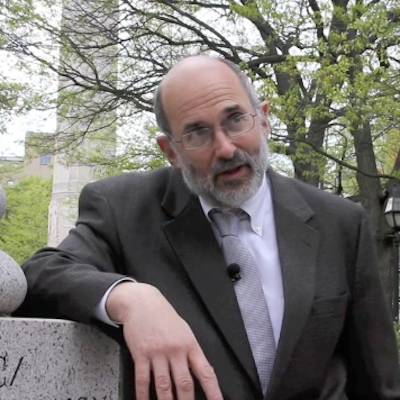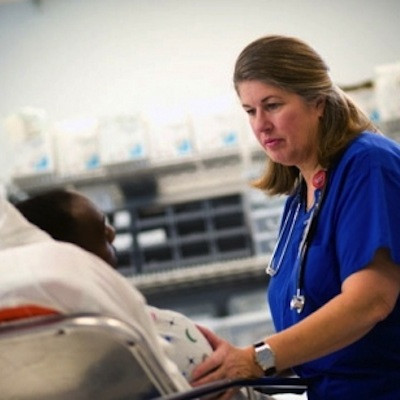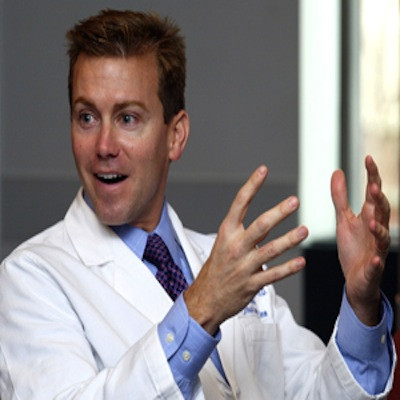Hospitals Account for Estimated 440K Preventable Deaths Annually
Monday, March 17, 2014
Medical mistakes are the third leading cause of death in America, far higher than auto accidents and diabetes. Only cancer and heart disease kills more Americans than medical mistakes. Experts say almost half of all local emergency room visits are unnecessary, which is just one factor in the rise of preventable hospital deaths in America each year.
In 1999 the Institute of Medicine published the bombshell “To Err Is Human” report, which revealed that up to 98,000 people a year die because of mistakes in hospitals. Though initially disputed, the report is now widely accepted by doctors and hospital officials, including RI Department of Health Director Dr. Michael Fine. Despite the seriousness of the problem, and the efforts of medical professionals all over the country, the annual number of preventable deaths has jumped to 440,000. The new data was revealed in a 2013 article written by John. T. James, PhD, in the Journal of Patient Safety
"In a sense, it does not matter whether the deaths of 100,000, 200,000 or 400,000 Americans each year are associated with PAEs (Preventable Adverse Events) in hospitals. Any of the estimates demands assertive action on the part of providers, legislators, and people who will one day become patients," wrote James.
GET THE LATEST BREAKING NEWS HERE -- SIGN UP FOR GOLOCAL FREE DAILY EBLAST"Yet, the action and progress on patient safety is frustratingly slow; however, one must hope that the present, evidence-based estimate of 400,000+ deaths per year will foster an outcry for overdue changes and increased vigilance in medical care to address the problem of harm to patients who come to a hospital seeking only to be healed."
James' work revealed that While some of these mistakes are shocking – operating on the wrong patient, amputating the wrong limb – the majority of them are routine to the point of being nearly impossible to track. Only 14% of the preventable harms identified in the medical records of Medicare patients are included in a hospital's incident reporting system.
Do no harm
Rhode Island and Massachusetts healthcare professionals are on the front lines of preventing these deaths by employing the first rule of medicine: Do no harm. Dr. Fine said at least 11 percent of all hospital admissions are unnecessary. That's just the beginning.
"First is the issue of over treatment. What the public often doesn't understand is that 30 to 50 percent of all medical procedures are likely unnecessary. This is a really interesting and difficult problem. You have to sort of think through the numbers. If you have a gall bladder problem, and we know the risk of gall bladder surgery is 5 percent, we make a studied decision. When you get that surgery, 95 times out of 100 it will improve your life. Five of those times it will worsen," Dr. Fine said.
"Should somebody propose gall bladder surgery to you that you didn't need then the benefit is zero and all you get is risk. Every instance of over treatment puts the public at risk."
This brings some merit to the old adage that suggests if you don't want to get sick, stay out of the hospital.
"In Rhode Island, 44 Percent of emergency department utilization is preventable. Every time you walk into an emergency room that increases your chance of someone admitting you to the hospital and doing something to you that you might not actually need," Dr. Fine said.
As an example, he pointed out that antibiotics are valuable when needed. Dangerous when not needed. This is not to say that people with real emergencies should not go to the hospital. However, a good relationship with a primary care provider goes a long way to preventing unnecessary visits to the emergency department.
"We suffer from not just the overuse of the hospital system but the absence of a healthcare system altogether. Other countries have a well-articulated system of primary care so that everybody has a primary are doctor down the street. That's their first stop. [In America], that absence leads to the 44 percent."
Patient responsibility
Proper use of emergency services and a good relationship with a primary care provider are two ways patients can empower themselves against medical mistakes. Still, patients need to be advocates for their own care. Asking questions, being persistent and speaking up for yourself with care providers is a right and a responsibility. Dr. Fine said the first thing people should do before being hospitalized is call their primary care provider.
"Say 'I'm in the hospital. What do you think?' They'll help you ask the right questions. It's hugely helpful because you're the patient. You want to have somebody you can trust to ask questions for you. There will be all sorts of people coming into your room and you may have no idea who is who."
The responsibility does't end there. Once in the hospital, Dr. Fine said it's crucial to have an advocate with you at all times.
"If anybody from my family ever goes into the hospital I'm there. I'm there with them. I sleep in the hospital. I want to ask questions. I want to put my feet on that ground and help and support wherever I can."
Local experts agreed that patients need to be proactive and properly educated about their medical options, but they also said it is the responsibility of the hospital to heal their patients. With that in mind, hospitals all over the country have focused on this problem since it came to light in 1999. The problem is complicated by the lack of a central protocol in place in every hospital.
Dr. Peter Pronovost, Johns Hopkins Medicine’s senior vice president for patient safety and quality, developed a scientifically proven method for reducing the deadly infections associated with central line catheters. His simple but effective checklist protocol virtually eliminated these infections across the state of Michigan, saving 1,500 lives and $100 million annually.
Common sense protocols
Many of the solutions, however, can be accomplished by uniform regulations for something as simple as frequent hand washing. This is especially true of infections.
"Healthcare associated infections are preventable, but you have to have huge discipline. The most important part to that is hand washing. Everybody has to do it," Dr. Fine said.
According to H. John Kemig, President and CEO of Healthcentric Advisors, solving the problem of preventable hospital deaths requires changes in protocol – such as hand washing and intake procedures – and hospital culture. First, and perhaps easiest, is protocol. .
"Hospitals are very complex entities, even small hospitals. I can tell you that from firsthand experience running this quality improve organization. Previous to that I'm a recovering hospital executive in the hospital systems for over 16 years. I've seen it from both sides of the table."
Kemig said a few areas of hospital protocol are still far from improved. The industry is still in the early stages of automating patient records – digitizing medical records and having them accessible not just within a particular institution but throughout the state.
"Automated or electronic medical records are still relatively new. Prior to that it was easy to have the wrong patient on the table because of medical records, the patient's access to the hospital from so many different areas from a physician's office, by ambulance, referred from other hospitals. Hospitals move at a very rapid pace. It could be a trauma patient, an ER patient … X-rays are being done, people are racing through the halls, people are rushing to save lives. There are basic human factors. Somebody can flip an X-ray on the view box in an operating room and then the surgeon operates on the wrong side of the brain," Kemig said.
Redundant checklists
One solution is familiar to anyone who has ever run errands or planned a vacation – a checklist. The prevailing hospital culture, as mentioned above, was that the doctor knows best. Today, hospitals are empowering all employees to be active in a redundant checklist system that could significantly reduce medical mistakes.
"For example, every person on the team has to say "Yes, this is patient Mary Jones. We're operating on her right knee. We're putting in this knee implant. We're making sure the X-ray on viewbox says Mrs. Jones.'" Kemig said.
It's a philosophy adopted from the aviation industry: Redundant checklists and confirmation from the many people involved in safety. Before any blood is drawn or a procedure is done the patient is asked their name. It may sound like a simple thing, but there are only so many names in the world.
"I can tell you from past experience it was not uncommon at one time in the hospital to have four or five patients with exactly the same name. All it takes is a fatigued transporter who has worked a double shift and gets an assignment to go get Mary Jones and there are four Mary Jones' in the hospital," Kemig said.
"Never in my 30-year career in healthcare have I ever seen anyone in the profession deliberately want to make a mistake."
Sometimes, the mistake could have been avoided if the wheels of hospital standards could speed up. Once medical research has established a best practice protocol for something it can take 15 years for that evidence-based, best practice to become hardwired in the system. Protocols such as administering Aspirin or beta blockers for heart attack patients when they arrive at the hospital is common, but it took awhile for all hospitals to adopt it nationwide.
Ambitious 7-step process
The Patient Safety Movement Foundation aim is to reduce the annual preventable patient deaths in hospitals to zero by 2020 with an ambitious 7-step process. There are many initiatives such as this one, but not all of them can claim former President Bill Clinton as a keynote speaker. Mass General and Brigham and Women's have publicly committed to reaching the Patient Safety Movement Foundation goal.
"We have a full portfolio of patient safety interventions in place to reduce avoidable harms. First and foremost we look for the best physicians, nurses and staff to provide the best outcomes," said Elizabeth Mort, MD MPH, Senior Vice President Quality & Safety and Chief Quality Officer at Mass General and MGPO.
"We have a number of protocols in place to reduce nosocomial infections including excellent compliance with hand hygiene. We have protocols in place to assess risk for falls and implement appropriate interventions. Our medication administration system is closed-loop and electronic thereby reducing the risk of medication error enormously. Our electronic provider order systems are equipped with decision support to ensure excellent compliance with best practice evidence based care. We have a rapid response team available for providers concerned about the clinical status of a patient."
Mass General is on the forefront of safety reporting, something generally lacking in national hospitals. They use their safety reporting system to collect input on events and near-misses. By evaluating events the hospital learns how to advance care protocols to reduce the risk of future events. Further, Mass General monitors every patient death and asks providers involved in the patient care to learn if there were concerning issues that led to the death.
"Obviously some deaths are inevitable but we are scouring the clinical cases to see if there is anything we can learn from the cases. We need to advance safety culture in institutions. We need to continue to expand our tool kit for quality and safety improvement work," Dr. Mort said.
Related Slideshow: Preventable Deaths in American Hospitals
Related Articles
- CHART: New England’s Best Hospitals Rated By Patients
- New England’s Best Hospitals Rated By Patients
- RI Hospital to Utilize Google Glass in Innovative New Study
- Methodology: Best Hospitals in New England Rated By Patients
- Top 10 Hospitals in Connecticut Rated By Patients
- RI Hospital First in RI to Implement New Defibrillator Technology
- NEW: HEALTH Reports Measles Exposure at Two Providence Hospitals
- Top 10 Hospitals in Maine Rated By Patients
- See the List: New England’s 50 Best Hospitals Rated By Patients
- NEW: Hasbro Children’s Hospital Named Hospital of the Month
- Top 10 Hospitals in Massachusetts Rated By Patients
- NEW: Hasbro Children’s Hospital Pediatric ICU Receives AACN Award
- Top 10 Hospitals in New Hampshire Rated By Patients
- NEW: Newport Hospital One of Most “Baby-Friendly” Worldwide
- Top 10 Hospitals in Rhode Island Rated By Patients
- NEW: RE/MAX Donates $5,000 to Hasbro Children’s Hospital
- Top 10 Hospitals in Vermont Rated By Patients
- Bradley Hospital to Host Adult ADHD Diagnosis Program on Jan 8
- NEW: RI Hospital Earns Beacon Award For Excellence in Nursing
- PODCAST: New England’s Best Hospitals Rated By Patients





















